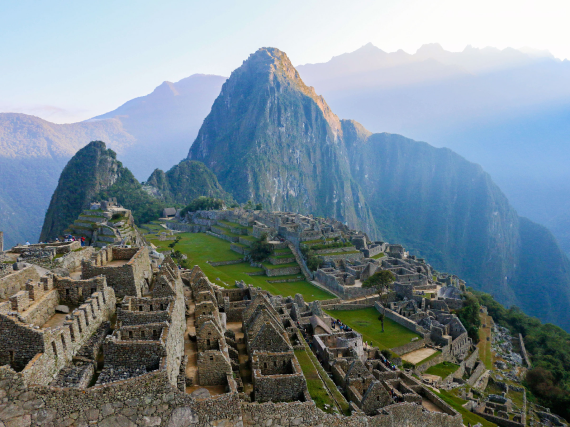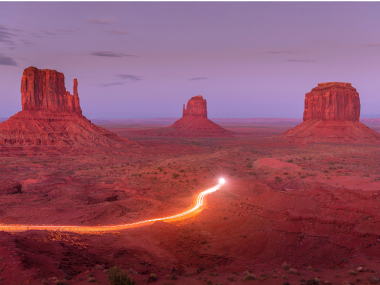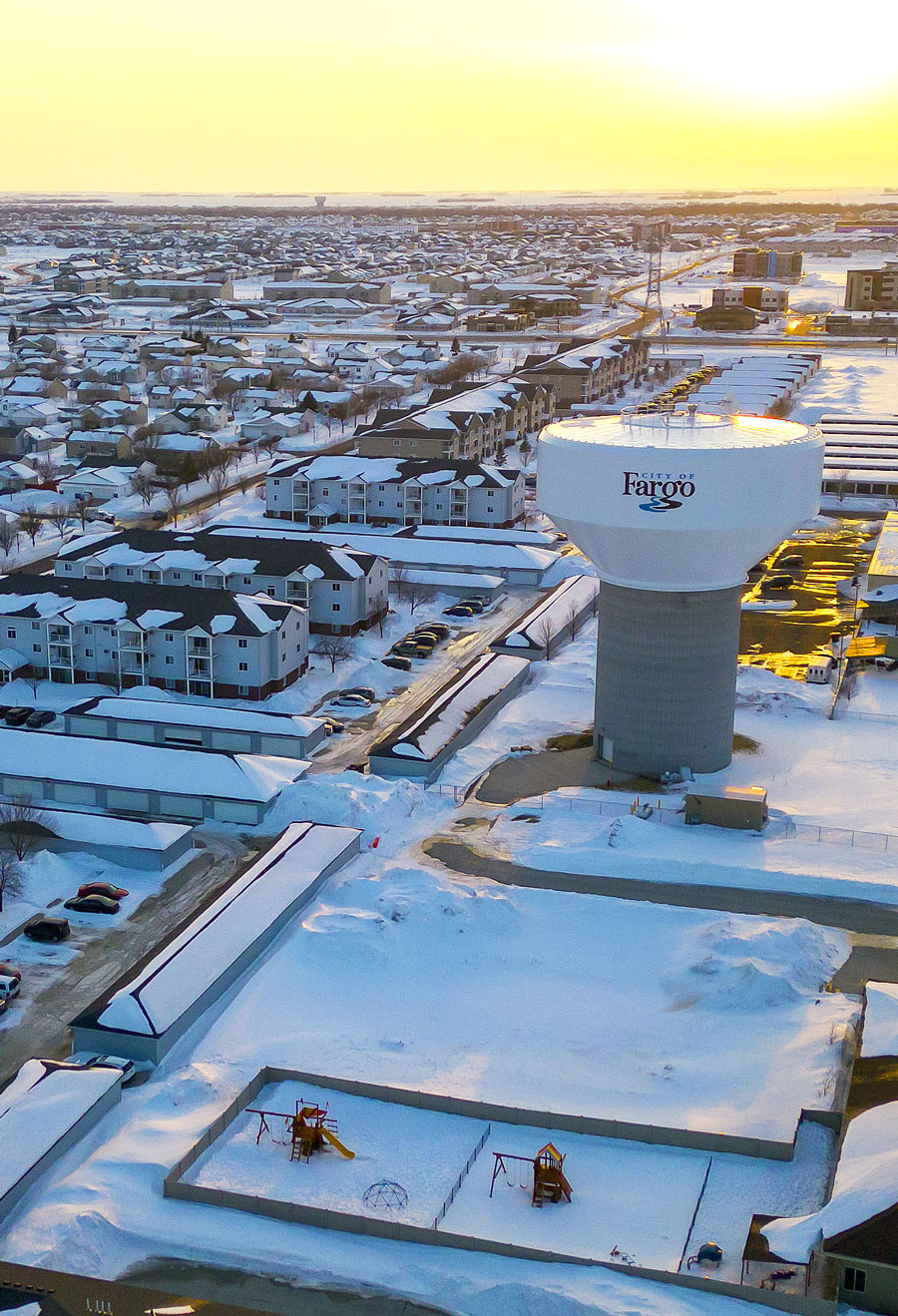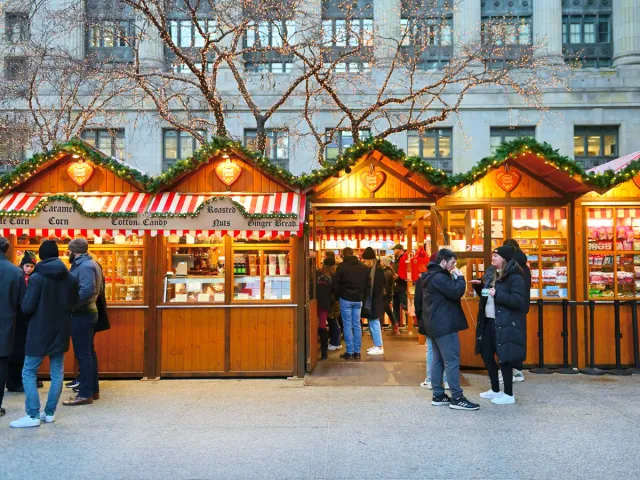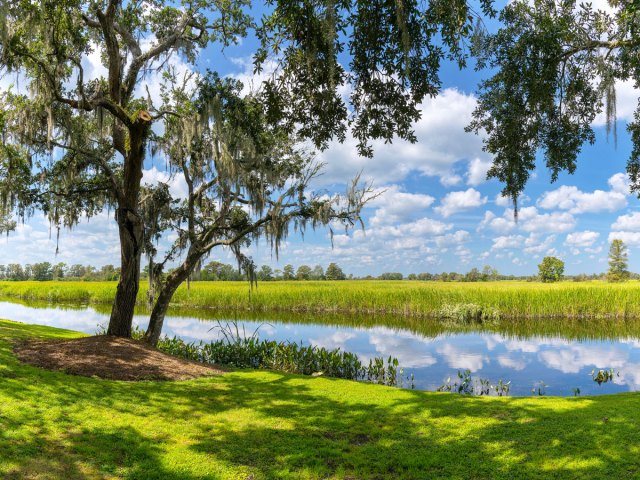Not every city in the U.S. can enjoy a predictable year-round climate. Some cities can experience some truly wacky weather patterns, like blazing summer heat one day, followed by snow the next. From the hottest city in the country to the state capital that attracts the most tornadoes, check out these eight U.S. cities that experience extreme weather.
Syracuse, New York
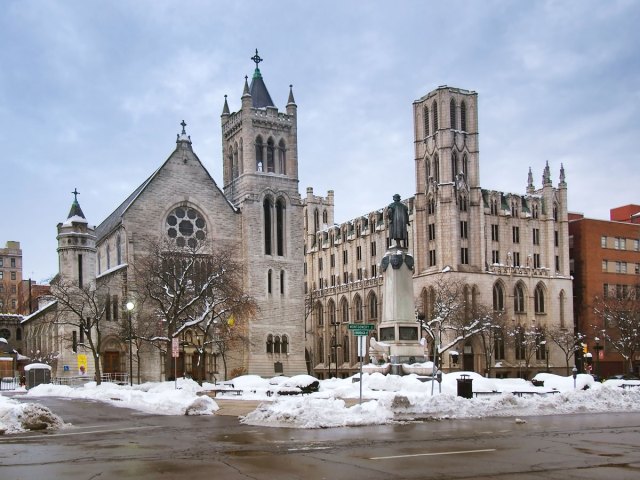
This upstate New York city is one of the snowiest cities in the U.S., with an annual average snowfall reaching 114 inches. Syracuse is located less than 40 miles southeast of Lake Ontario, and its weather is heavily impacted by lake-effect snow, caused by cold air moving across the relatively warm waters of the Great Lakes.
Perhaps the best example of this is the infamous snowstorm of December 2010, which lasted four days and dumped a total of 43.2 inches of snow on Syracuse. If you visit the city in winter, embrace the white stuff with activities like snowshoeing, sleigh rides, ice skating, and viewing the snow-loving animals at the Rosamond Gifford Zoo.
Phoenix, Arizona
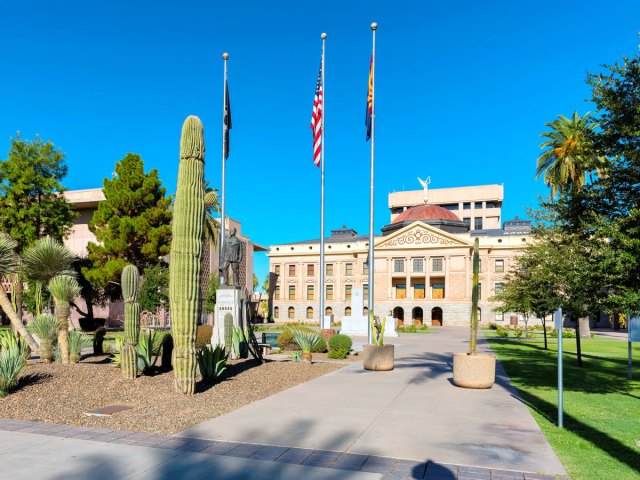
Aptly nicknamed the “Valley of the Sun,” Phoenix is one of the sunniest places in the U.S. and the hottest cities in the country. Phoenix’s location in the Sonoran Desert and the presence of the Laguna Mountains (which block the cooler Pacific Ocean air) contribute to its record-breaking heat.
The city boasts some truly impressive temperature stats: In 2024, Phoenix recorded 113 consecutive days at or above 100 degrees Fahrenheit, the most on record. The city’s hottest recorded temperature was 122 degrees on June 26, 1990. Tourists might consider visiting in winter, spring, or fall to discover the area’s many attractions — such as Camelback Mountain and Desert Botanical Garden — in milder temperatures.
Denver, Colorado
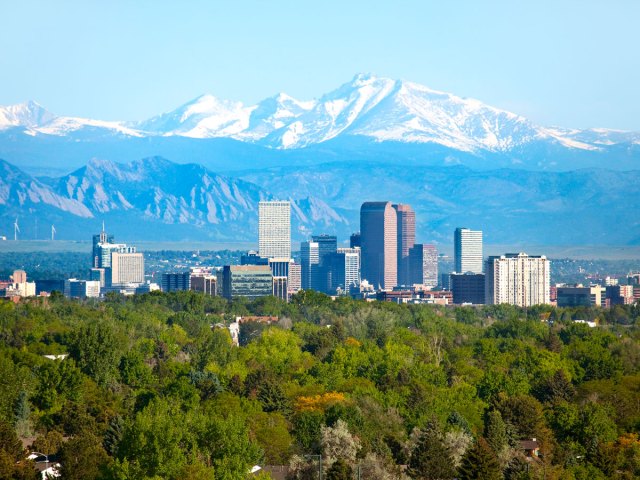
No list of extreme weather cities is complete without the Mile High City. Thanks to its elevation at 5,280 feet above sea level, Denver is prone to quick and extreme shifts in temperature and weather. Sudden, strong cold fronts are not unusual, with several instances that have taken the city from record highs to near-record lows within a 24- to 36-hour period.
On September 12, 1993, temperatures soared to 92 degrees Fahrenheit, and then 5.4 inches of snow fell the next day. More recently, on September 5, 2020, temperatures spiked again in Denver, breaking record highs with two days of 90-plus degree temperatures. But just three days later on September 8, an Arctic cold front abruptly swept through and knocked temperatures below freezing and brought an inch of snow. If you plan to visit Denver, make sure you pack plenty of layers, so you can enjoy the great outdoors regardless of the weather.
Fargo, North Dakota
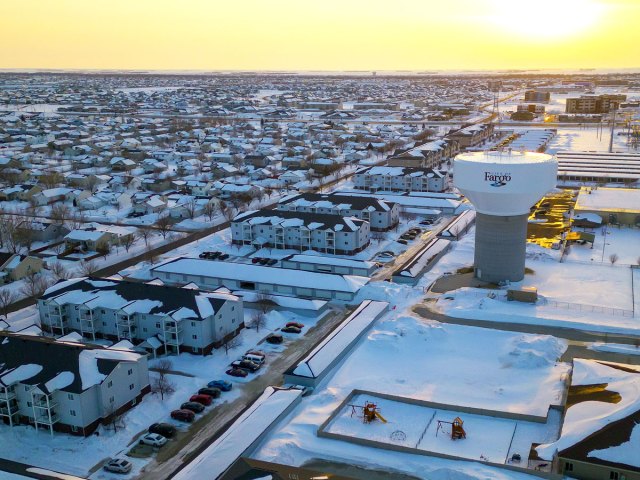
Many will point to the 1996 namesake movie as Fargo’s claim to fame, but the city’s extreme temperature changes over the course of a year may be a close second. In the dead of winter, temperatures plummet to an average of just 3 degrees Fahrenheit and rebound fiercely in the height of summer, when the typical high is 82 degrees. The city’s hottest temperature on record was 114 degrees on July 6, 1936; the coldest was -39 degrees on February 1, 1996.
Fargo has a number of options for visitors in varying weather, though: There are museums and local breweries that visitors can check out on inclement days, while summer is an opportune time to try your luck at the North Dakota Horse Park or check out some of the world’s rarest cold climate species at the Red River Zoo.
St. Cloud, Minnesota
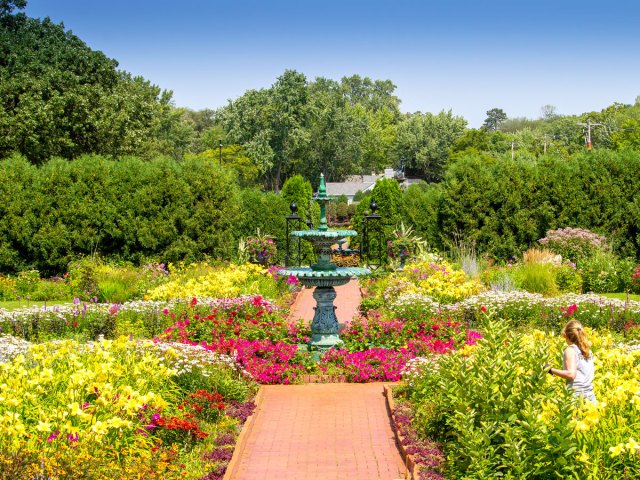
Like neighboring North Dakota, Minnesota is truly a place that experiences all four seasons. The Midwest state has some of the most excessive temperature swings in the country. St. Cloud’s location in the middle of the state puts it in the center of the warm air that pushes up from the Gulf of Mexico, as well as the continental polar air that sweeps down from the Arctic.
Residents endure cold and snowy winters with temperatures plunging into the single digits, and then swelter throughout the summer when temperatures reach over 80 degrees Fahrenheit. Favorite summertime activities include strolling around the Munsinger Clemens Garden, discovering the Sculpture Walk, and enjoying the natural wooded area of Beaver Island Trail.
Chicago, Illinois
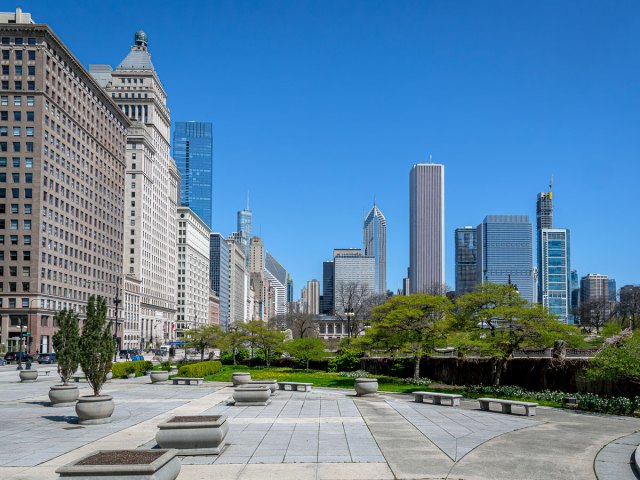
Though Chicago’s Windy City nickname doesn’t actually come from the weather, it’s true that Chicago experiences more than just a light breeze over the course of a year. The winter temperatures frequently dip into the teens, while the prime summer months see highs well into the 80s. Extreme situations far exceed the averages, like the heat wave of 1995, when temperatures soared up to 106 degrees Fahrenheit, and the Groundhog Day snowstorm of 2011. Nicknamed “Snowmageddon,” it dropped 21 inches of snow in the city over the course of only a few hours.
In addition, Chicago also sees frequent thunderstorms and is even prone to tornadoes. The good news? There’s plenty of pleasant weather in between for discovering outdoor attractions like trails, parks, riverwalk, and Lake Michigan. And when the weather doesn’t cooperate, the bar and restaurant scene will more than make up for it.
Sioux Falls, South Dakota
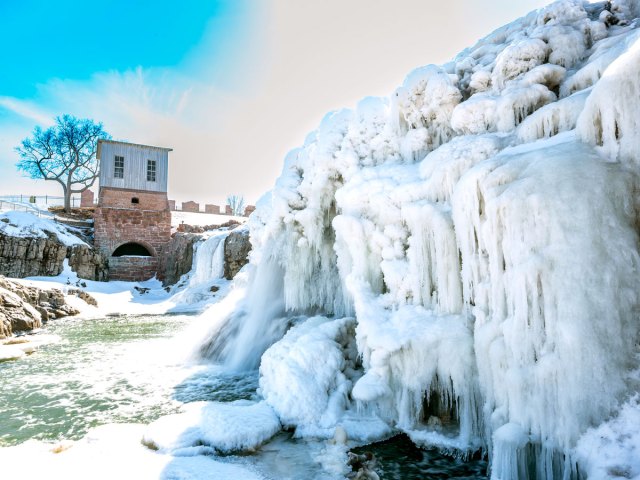
The waterfalls that flow through the center of town are Sioux Falls’ signature attraction, but this South Dakota town is also well-known for its fluctuating seasonal temperatures. The average low of 10 degrees Fahrenheit in January is a drastic change from the average summer high of 84 degrees, but residents make the best of weather in every season.
Major outdoor events like the LifeLight concert take center stage in the summer, while skiing and snowboarding dominate the snowy months at Great Bear Ski Valley. A stroll around Falls Park is a must regardless of the weather. It can be especially magical in winter when the below-freezing temperatures suspend the water into frozen cascades.
Oklahoma City, Oklahoma
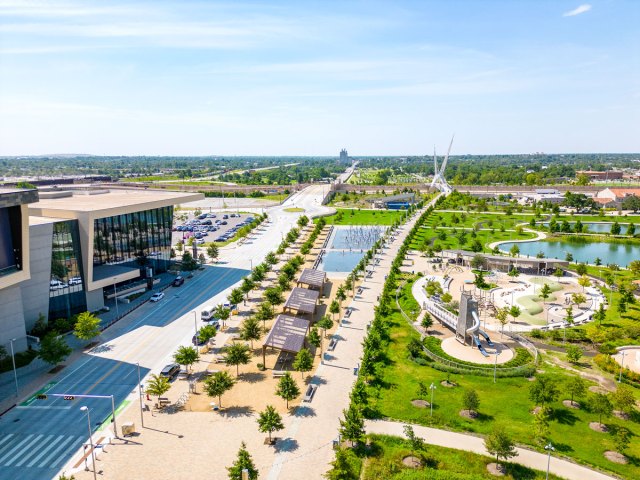
With a location smack dab in the middle of “Tornado Alley,” it’s no surprise that Oklahoma City has a reputation as one of the most tornado-prone cities in the U.S. A record 152 twisters touched down in the state as a whole in 2024, several of which touched the capital city, and hundreds more have been recorded in the previous decades. Oklahoma City was hit five times in a single day on three separate occasions in 1974, 2013, and 2018.
Staying up to snuff on twister protocol and having access to a tornado shelter is a way of life for residents, but it’s a good idea for visitors to also review tornado safety procedures before visiting. While tornadoes can happen year-round, conditions are most likely from late March to August, so visiting outside of those months is the best time to enjoy OKC’s excellent entertainment options. Catch a concert at Scissortail Park, check out the newly renovated National Memorial Museum, or immerse yourself in the city’s booming arts and culture scene.
More from our network
Daily Passport is part of Inbox Studio, which publishes content that uplifts, informs, and inspires.

